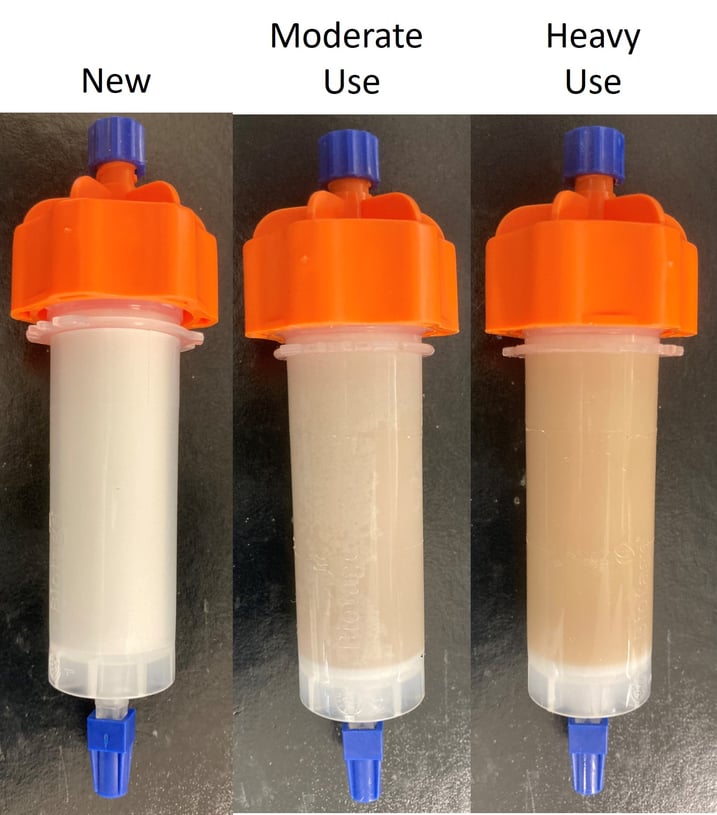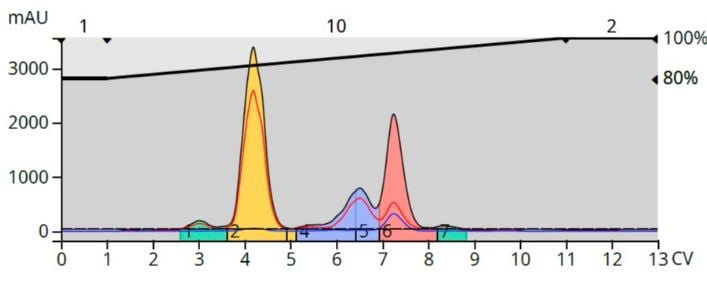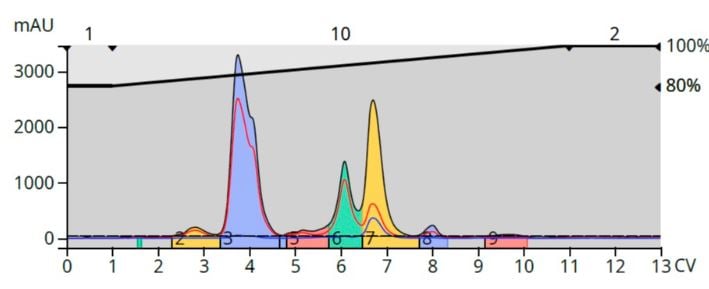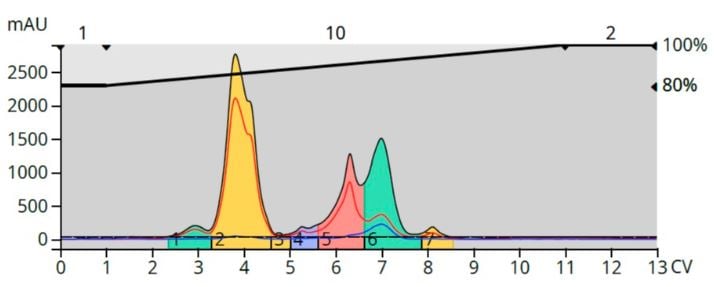Knowing when it is time to replace your reversed-phase flash column is a question I am asked frequently along with…
How many times can a reversed-phase column be used?
What is my reversed-phase flash column’s loading capacity?
In this post, I will address the signs and symptoms that will point you in the direction of replacing your reversed-phase flash column.
In medicinal chemistry and organic synthesis labs, reaction mixtures are typically created once and purified once. When reversed-phase is used for these purifications it can be hard to know if a poor separation is due to a non-optimal method or a bad column. This can be especially challenging if the reversed-phase column has been used, either by you or a colleague, multiple times.
Unless the column has notes on it or a log is kept of its uses, a used column’s storage solvent, last use date, and last user may not be known, also leading to some apprehension on the column’s quality.
To determine if a column is “good”, you can always run test with a known sample. This can be a previous reaction mixture with a known separation profile or a home-made mix of standards. When doing this testing, you need to look at and log the following performance criteria…
- -Peak shape
- -Peak splitting
- -Peak fronting or tailing
- -Retention time
- -Selectivity
- -Resolution
- -Back pressure
It is important to understand that just because one or more of these parameters changes with column use, that does not necessarily mean the column needs to be changed or replaced. If your purification provides the desired purity and yield, the column is still viable.
That being said, the chances of a positive purification result typically diminish if significant performance changes are encountered. I say typically because it is not uncommon for used reversed-phase columns to provide better purification results with increased use. This is due to some non-specific stationary phase modifications repeated use or high sample loads can provide.
These non-specific modifications can manifest themselves in several ways…
- -Sharpened peaks
- -Altered, but stable retention time shifts
- -Discoloration of the media not removed with washing in strong solvent (e.g. acetone)
- -Improved selectivity or resolution
As an example, I purified a natural product extract on columns from the same manufacturing lot which had various use levels. Depending on their usage, the media color ranged from white, to tan, to brown, Figure 1.

Figure 1. Pictures of C18 columns with various use levels. Left - new, unused column. Middle - moderately used column. Right - highly used column.
Columns with color that cannot be removed with solvent washing, e.g. acetone, are often perfectly good for purification which you will see in the information provided below.
For the evaluation, I loaded 20 mg of the extract on the following columns…
- -A new, never used column (Figure 2)
- -A moderately used column, light brown in color (Figure 3)
- -A heavily used column with a darker brown color (Figure 4)
The results show the separation improved with use but only to a certain level, after which the separation performance declined.

Figure 2. Natural product extract purified on a new column. A close look at the chromatogram shows a slight shoulder on the main peak (yellow) and a broad middle peak (blue).

Figure 3. Natural product purified on a used C18 column showed improved peak shape and resolution compared to a new column. The shoulder on the main peak (blue) is better defined and the middle peak has sharpened significantly. Also elution volumes decreased slightly.

Figure 4. Natural product purification using a heavily used column showed diminished resolution of later eluting compounds (middle, red) and last (green) but excellent separation of earlier eluting compounds.
Based solely on chromatographic performance, the conclusion is that the column with the most discoloration (highest use) performed worse than the others, but still provided a separation of each of the compounds in the mixture, especially the early main compound from its nearest eluting neighbors.
However, the moderately used column actually performed best; better than the new column and the more heavily contaminated column. This is not uncommon, especially with preparative columns, as there can be some stationary phase modification, typically irreversible, that can occur with repeated use with high sample loads.
What you should focus on is your column’s ability to isolate your targeted compounds with high purity. If it does that, keep using it. If you are not sure if you should use it, test it with a known sample, as I have done here, and see what the separation looks like.
For more information on reversed-phase flash chromatography, download our whitepaper How to Determine Reversed-phase Loading Capacity.

